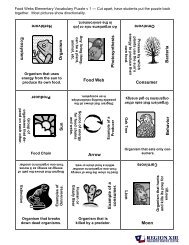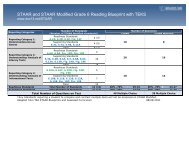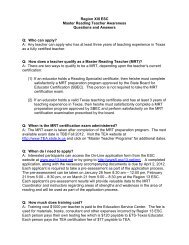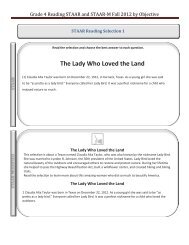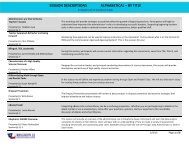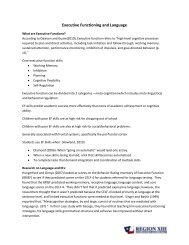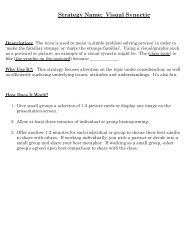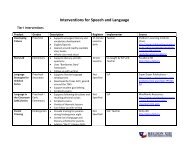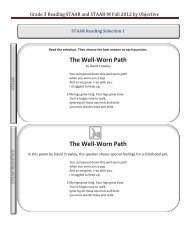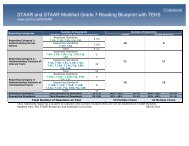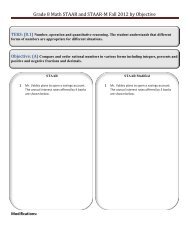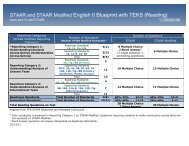2nd Six Weeks Newsletter - Region 13
2nd Six Weeks Newsletter - Region 13
2nd Six Weeks Newsletter - Region 13
Create successful ePaper yourself
Turn your PDF publications into a flip-book with our unique Google optimized e-Paper software.
2010—2011 Second <strong>Six</strong> <strong>Weeks</strong> PreviewSocial Studies5 th GradeUnit 3: Road to Revolution. This unit focuses on the events, issues, and individuals that led the thirteen English coloniesto revolt against Great Britain. The differences in the perspectives of the government in Great Britain and the colonieson economics and participation in government in addition to the physical distance created a divide that eventuallyresulted in open conflict which we call the American Revolution.Unit 4: The Revolution that Changed the World. The American Revolution grew out of increasing dissatisfaction withthe treatment of the English colonies in North America. In this unit students identify the contributions of significant leaders,analyze causes and effects of events during the Revolution, and summarize the results of the American Revolutionwith the birth of a new nation. Social, political, and economic independence was a desire for many colonists living in theEnglish colonies and they were willing to forfeit their lives to achieve this goal. The Declaration of Independence hasserved as a blueprint for many people who desired the same type of independence. The art, literature, and music of thetime reflected the values and principles of these colonists and are part of the legacy that the United States still treasures.The new nation that resulted from this conflict was unlike any other nation during that time. It completely changed theworld.6 th GradeUnit 3: South America. The focus of this unit is the history, geography and culture composition of South America. Thelessons will focus on 1) impact of geographic factors on human settlement and natural resources; 2) European invasion,conquest, and colonization which historically influenced immigration, trade, and the nations’ form of government withinthe continent ; 3) cultural diversity and contributions to the arts, architecture, philosophical ideas and religious beliefs;and 4) economic development and activities using human purchasing power, literacy, and life expectancy to measure asociety’s economic level.Unit 4: North Africa. This unit shifts students from the western hemisphere to the continent of Africa which is known as“The Cradle of Mankind” with a primary focus on North Africa. Recent discoveries of skeletal remains, tools, and cavepaintings in Africa can be traced back more than six million years. The focus of this unit will be on how Africans havepassed down their history, culture, and human wisdom and survived the harsh landscapes, powerful kingdoms, empiresand nations.7 th GradeUnit 3: Colonization. This unit focuses on the diverse motivations, interests, and needs that brought settlers to Texas.Thousands of people from all backgrounds arrived seeking land and a new life. The majority settled on farms, someopened businesses, and soon small towns began to grow. During this period 100’s of settlers came from the UnitedStates. Disagreements grew between the settlers and the Mexican government. This created conflict which would leadto war.Unit 4: Texas Revolution. This unit focuses on sectionalism, the Civil War, and Reconstruction. As the United Statesextended from the east coast to the west coast, sectionalism grew. Sectionalism created problems between the politicalbeliefs of most Texans and elements of the United States government. Federalism, the distribution of power between thecentral authority and the states, was in jeopardy. The support of states’ rights and other issues such as slavery wouldlead Texas to secede from the Union, join the Confederate States of America, and fight in the Civil War. Texas and theSouth would lose that war and be forced to reevaluate the principles that they once supported as part of the UnitedStates. The period known as Reconstruction was a very difficult time for parts of Texas. The economic, social, and politicalimpact of Reconstruction was a turning point in Texas history and changed the culture and beliefs of Texans as theyclosed the 19 th century and moved into the 20 th century.25



